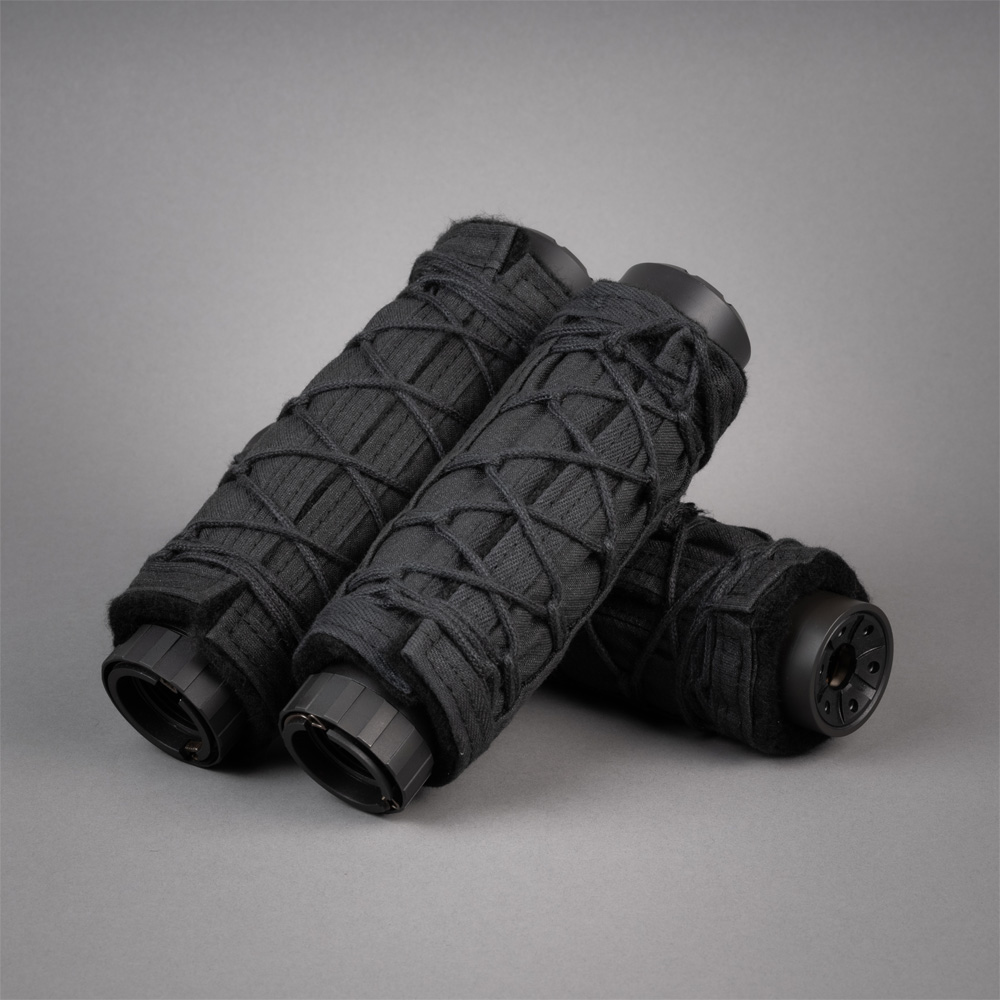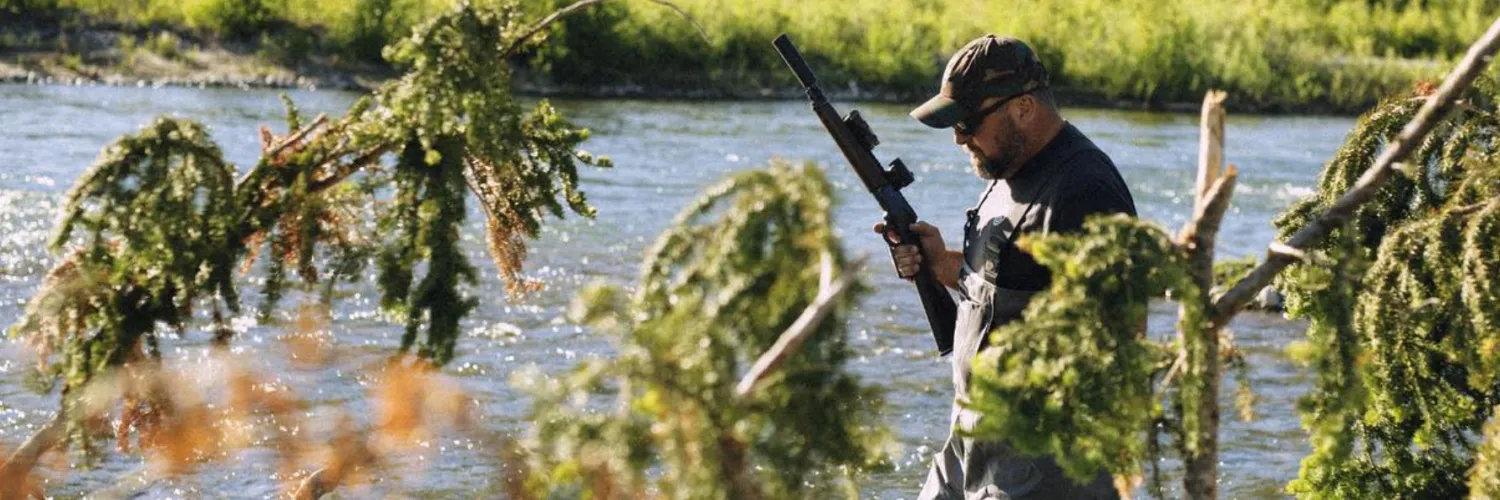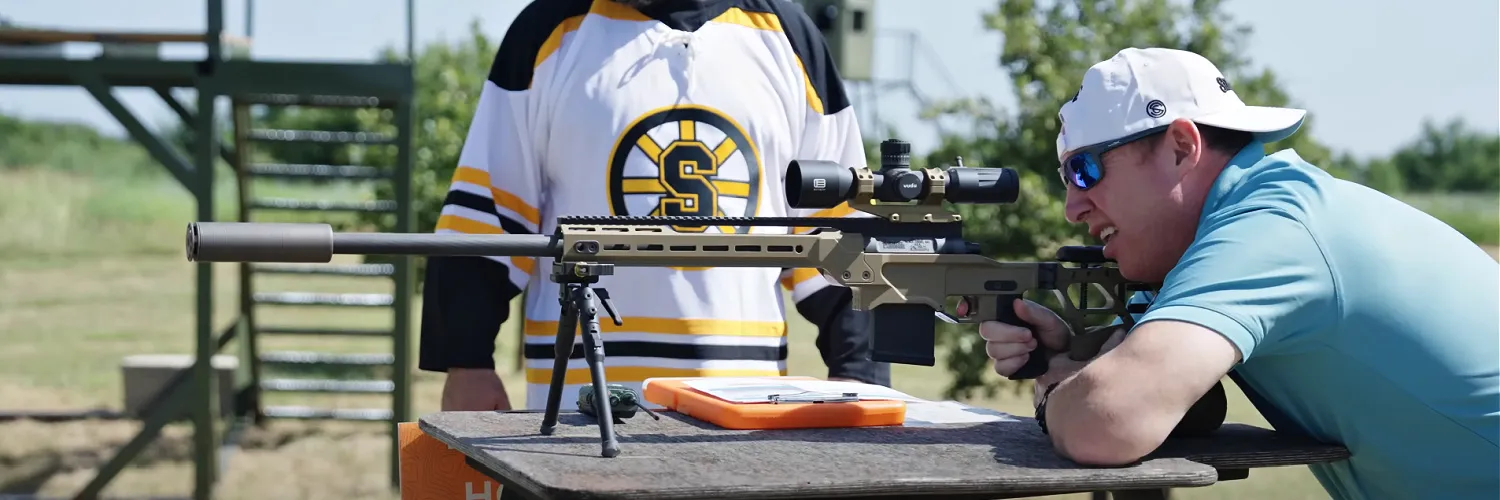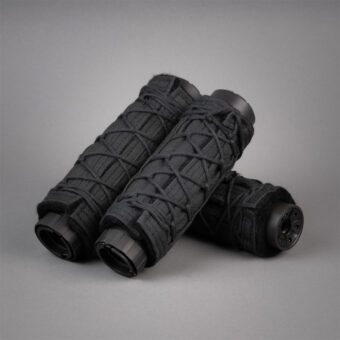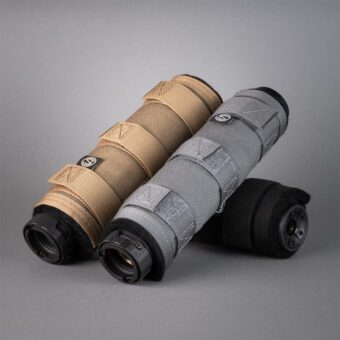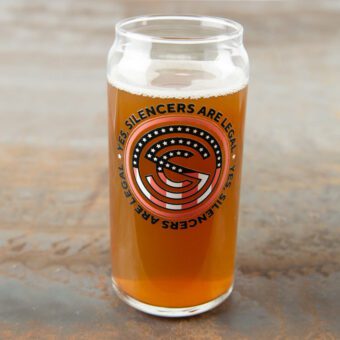Home / Firearms & Gun Parts / Seriously: You Need a Suppressor Cover
Seriously: You Need a Suppressor Cover
Seriously: You Need a Suppressor Cover
Home / Firearms & Gun Parts / Seriously: You Need a Suppressor Cover
William Lawson
Who needs a suppressor cover? You do! Your blaster of choice might be the 1969 Dodge Charger of rifles, but if it doesn’t have a Hemi, it just isn’t everything it could be. Think of the suppressor as a Hemi. And to get the most out of your suppressor, you need a good cover.
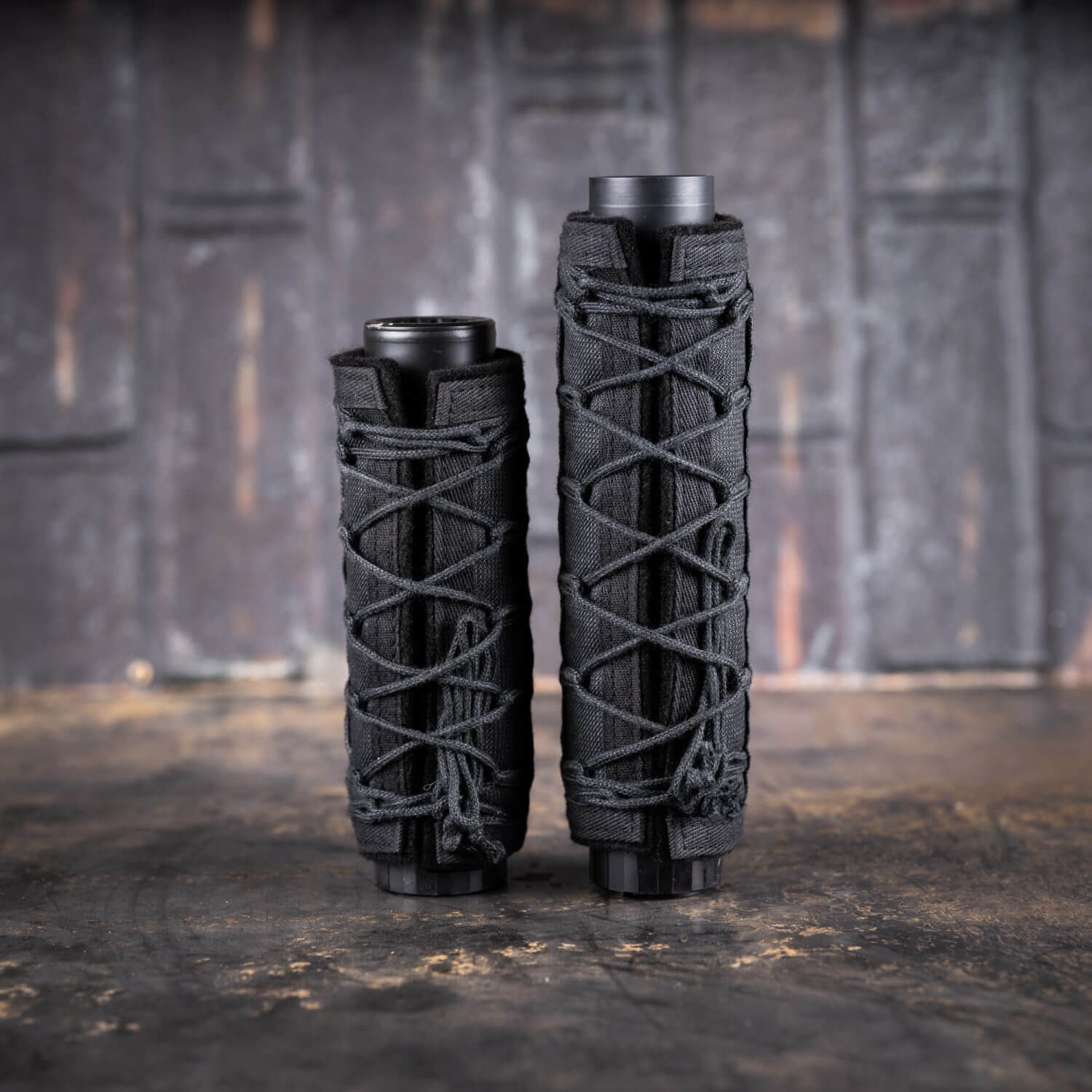
“Why is that?” you may ask, and I get it. Cool guys in the movies never use suppressor covers. Personally, I never knew they were even a thing until a couple of years ago because I hadn’t yet seen the suppressor light. But another thing you don’t see in the movies is that a suppressor gets really hot, really fast. And like other things that tend to heat up when spouting off, it’s often a good idea to cover it with a protective sheath.
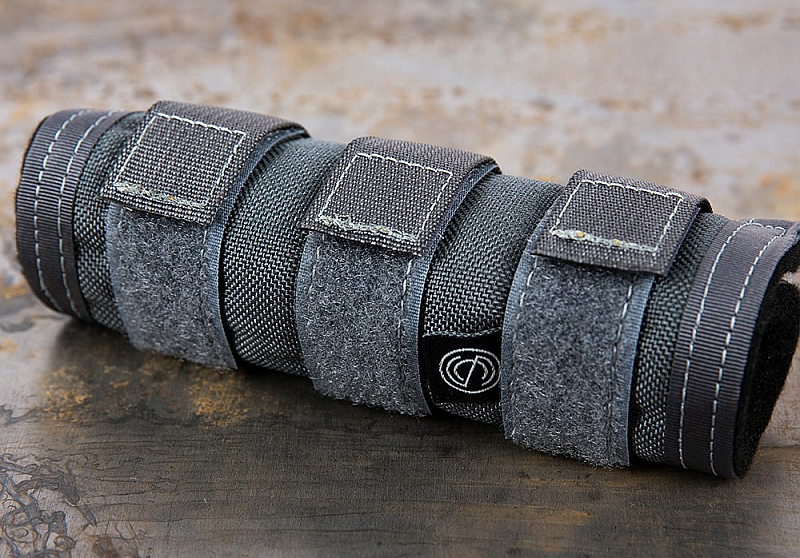
But, as helpful as they are, you need to know a few things before buying one of those little devices for your Old Fella. Or a suppressor cover. Fortunately, there are lots of choices out there, and with a little bit of study, you can find the right one. And we’re going to start you on that road right now. So, without further ado, here are some of the things to consider when buying a
suppressor cover.
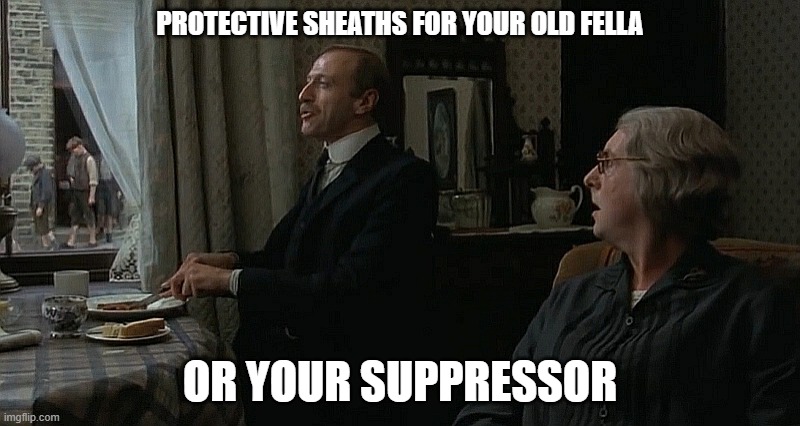
Five Reasons To Buy a Suppressor Cover
1. Self Protection
As I mentioned, suppressors get hot. I mean rising in temperature by hundreds of degrees in a very short time, depending on how fast you shoot. The faster you sling lead, the hotter it gets, which can cause a couple of problems. One is that if you touch the suppressor when it’s that hot, well…let’s just say you’ll wish you hadn’t, gloves or no gloves.
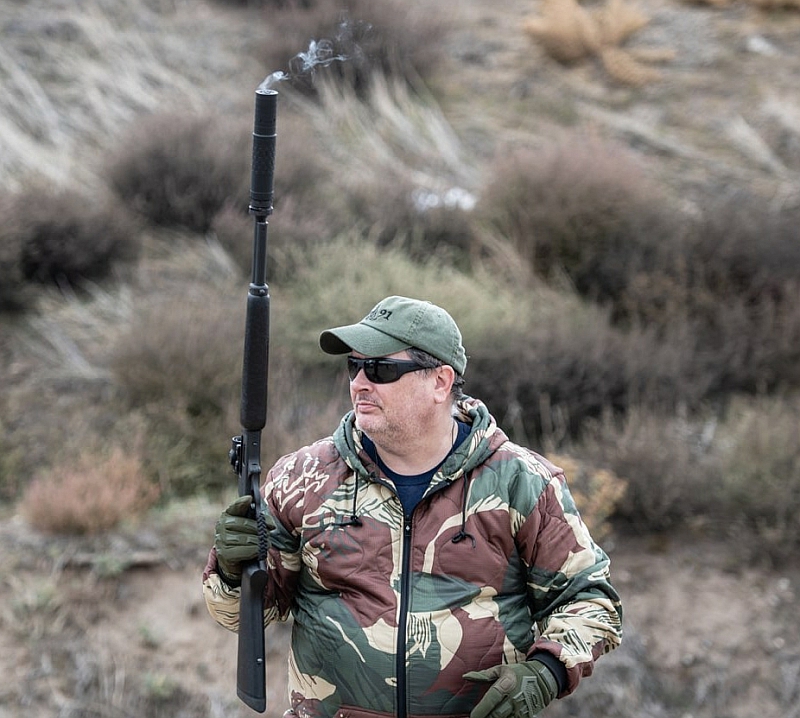
Suppressor covers are heat resistant. Most of them can handle temps of 1000° Fahrenheit or higher, allowing you to touch, or even grip the cover without channeling your inner John Basilone. Some covers have an intermediate thermal layer rated around 1,400° to 1,800°. Some covers are rated lower, such as 500° for rimfires or around 800° for precision rifles.
And if you’re shooting suppressed in a class or a drill that requires a transition to your sidearm, a good cover can keep the hot suppressor from frying your leg. And yes, it will do that through your clothing.
2. The Mirage Effect
We’ve all seen heat mirages in the movies. Your suppressor won’t cause you to see an oasis through your scope, but the heat rising from it will damn sure screw up your sight picture when using an optic. You can forget about precision shooting when that happens. Finally, the mirage will negatively affect a thermal optic’s sensor.
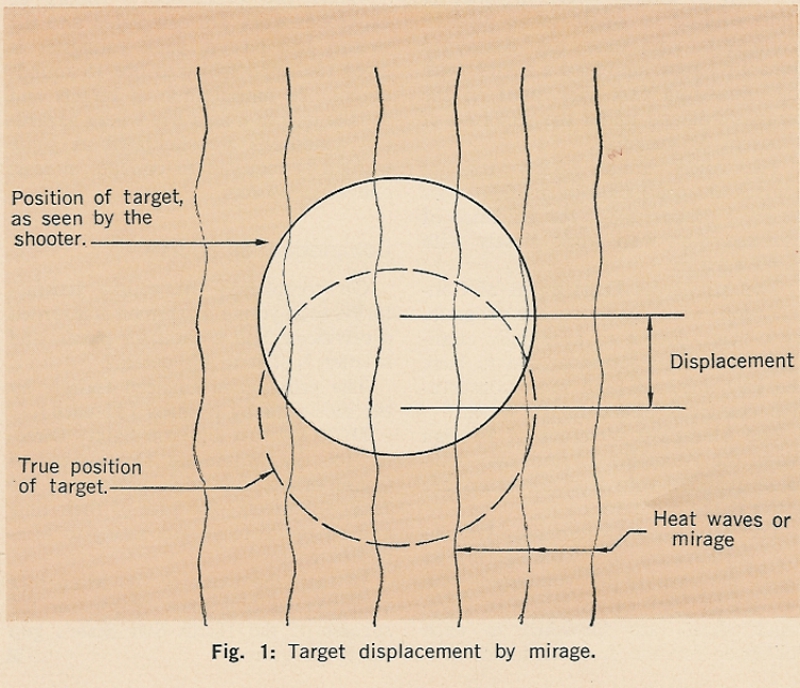
But a good suppressor cover mitigates, and some all but eliminate, the mirage effect. Within reason of course. If you’re burning it down with multiple mag dumps, that’s not gonna work. But a mag dump isn’t exactly a precision technique, is it?
Without a cover, even five or six shots can result in a heat mirage. Cover that thing up and you’ll be hitting the sweet spot all day.
3. Property Protection
This one kind of depends on where you are and what you’re doing, but it is possible that a hot suppressor could light up some dry grass if you’re shooting prone.
4. Protecting the Suppressor
The sooner you remove a can from your rifle (or pistol), the less likely you are to experience “carbon lock,” which can damage the gun and the suppressor. Having a cover that allows you to remove it without burning yourself is a plus.
5. Signature Reduction
A good suppressor cover can also reduce your heat signature since night vision and thermal imaging are real things. It won’t eradicate your signature and you have to be aware of what shows and how it shows but you won’t have a big neon sign on the end of your rifle either.
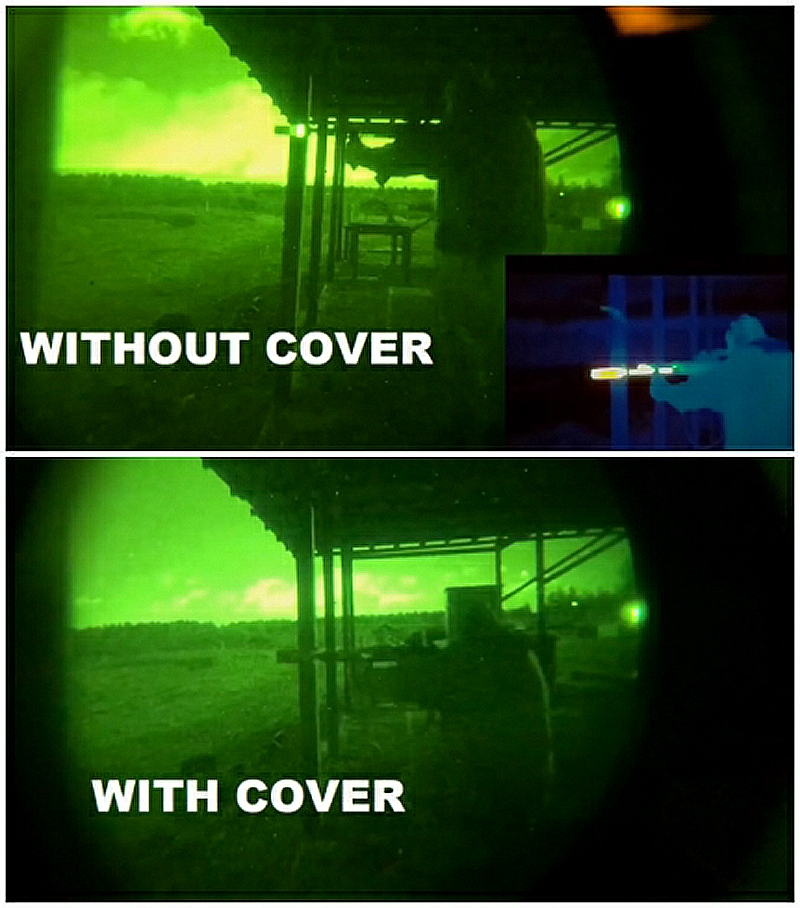
Different Kinds of Suppressor Covers
There are currently three basic types of suppressor covers: silicone sleeves, fabric wraps, and polymer and metal covers. That last category is newer and offers fewer options. Some of those are more expensive and the technology is still a work in progress, though it looks promising.
It’s a good idea to buy a cover with the means to secure it to the suppressor. If you don’t, the cover will move forward as you shoot. That can damage the cover by exposing it to the hot front end or you could shoot a hole in the cover. I’ve seen reports of some guys shooting the thing entirely off the gun. And we all know that losing your sheath while firing can result in unwanted consequences.
Let’s hit the main features of each to give you an idea of what’s what.
Silicone Sleeves
These are simple heat resistant silicone affairs that you slide over your suppressor. You’ll probably have to wet or lubricate your suppressor first. They come in the same basic profile, some slimmer than others.
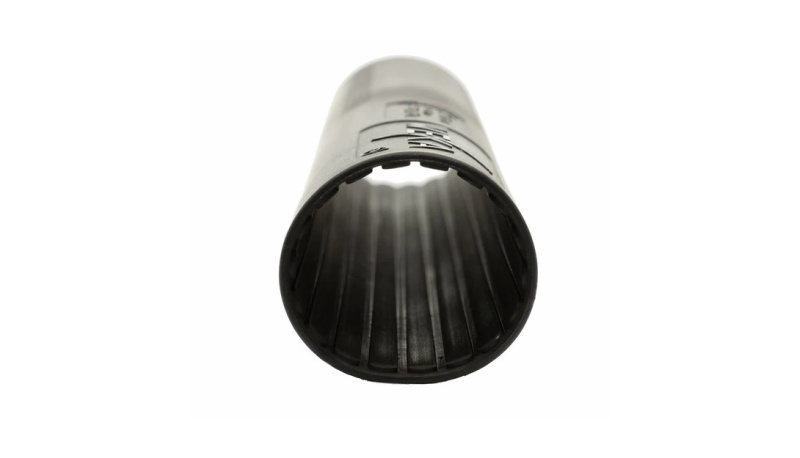
They are generally effective, having interior vent channels to release heat and a non-venting top to combat the mirage, at which the silicone sleeves excel. A decent-quality sleeve will stay in place like it’s supposed to as it heats up.
A small downside is that same gripping quality can make it a little difficult to remove and you have to be careful not to peel it, as it can damage the finish on your suppressor. Some recommend pouring some water into the sleeve to help with that. Many silicone sleeves are also ribbed to give you a better grip.
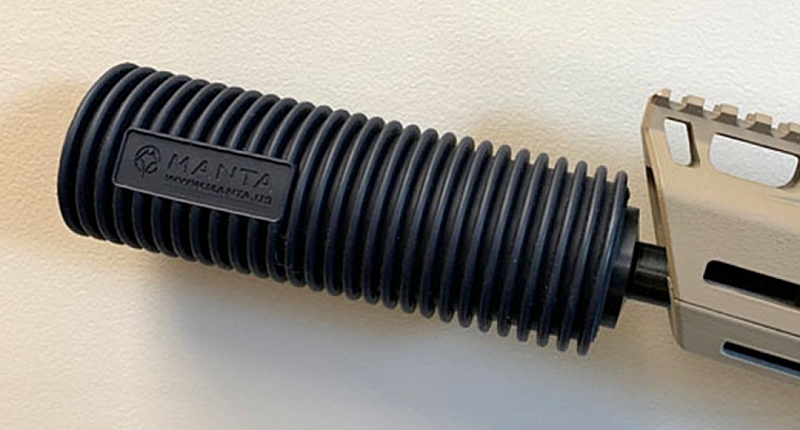
Fabric Wraps
Fabric covers are the most popular right now. They feature an inner thermal lining, often made from fiberglass, Kevlar, or Nomex, wrapped in heat-resistant fabric. Some have an extra thermal liner between layers.
Fabric covers require the most research because there are so many from which to choose. Most control heat and mirage quite well, but they may focus on one over the other. Some fabric covers focus on mirage reduction, making them more suitable for precision rifles. A precision cover likely wouldn’t work as well on an AR because it would heat up too quickly.
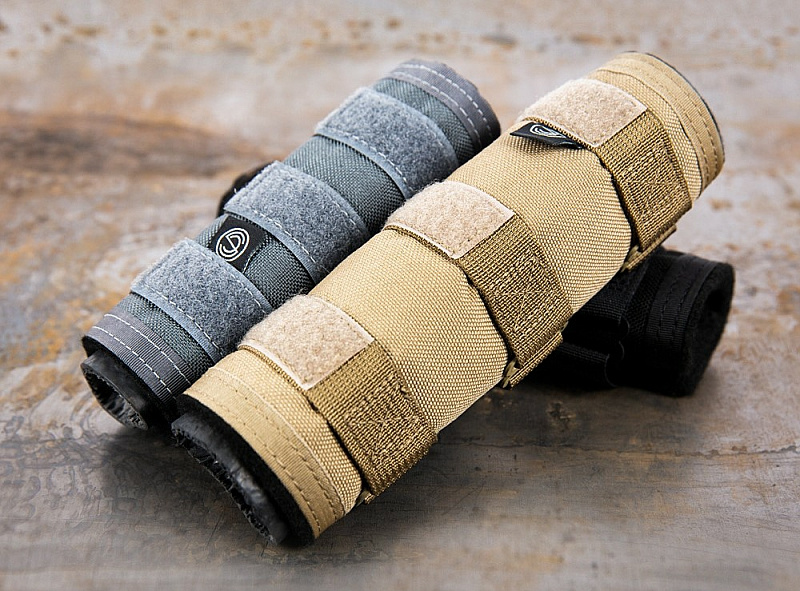
Pay attention to how well each cover attaches and holds to the suppressor. Some feature Velcro straps, often with metal buckles to tighten the straps. My research revealed that Velcro can be a weak spot and may degrade faster than the cover itself. If you can’t tighten it effectively, the cover becomes useless. The metal buckles may also heat up during firing and can burn you if you touch them. Since protecting your hands is the cover’s main purpose, that’s a potential problem.
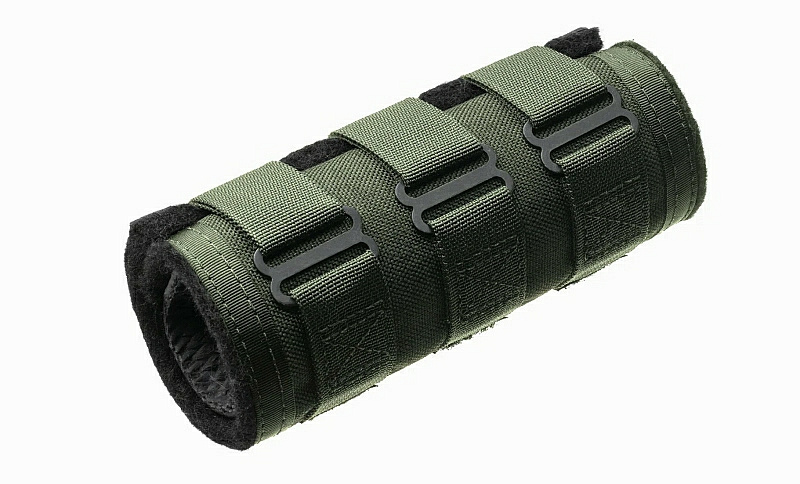
The most effective fastening system may be the drawstring or cinch cord. It’s like lacing up boots, but each one has a particular way to do it. Follow the instructions that come with the cover. I understand that’s sometimes a problem since I often see the printed material in products as optional. But you should do it, or you might injure yourself, ruin your cover, or both.
Not all fabric wraps can cinch onto the suppressor’s back to prevent movement. Pay attention to what you’re getting and know whether that feature is important to you.
The heat shields of some fabric covers can stick to the suppressor when they get hot, similar to the silicone covers, so be careful when removing them.
Polymer Covers
This last category is the newest and most limited in terms of choice. The best ones are considerably more expensive than the best fabric or silicone covers. Others that aren’t quite as expensive look promising but still have a little work to be done with the design to improve durability.

They consist of a polymer cover over a metal heat shield, not unlike the old M-16 handguards, but in this case, the polymer is often vented. There are also vents on the front and/or rear to allow airflow between the heat shield and the outer shell. Retention relies on metal clamps directly on the suppressor or attachments to your rail or handguard.
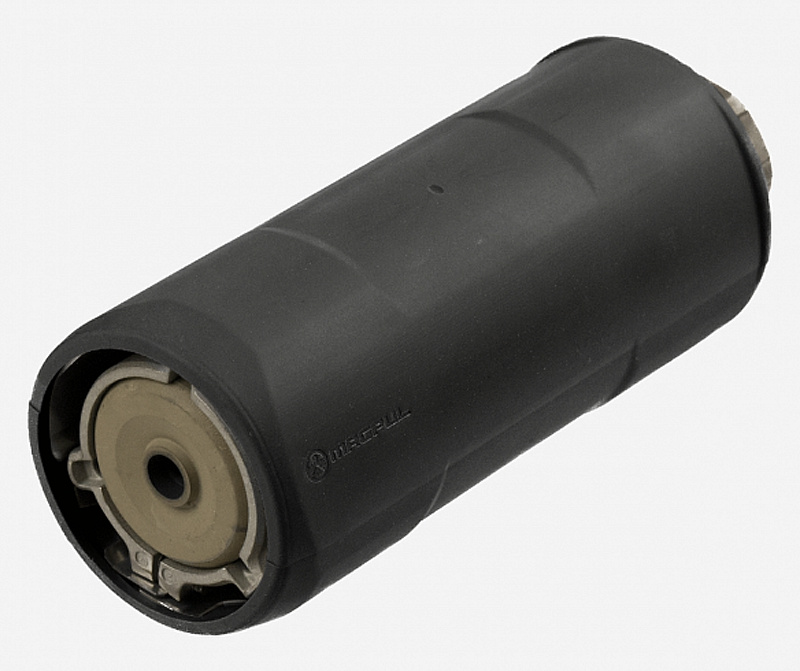
One concern about this type of cover is its rigidity. You will have to make certain it’s compatible with the other accessories in your setup. The most likely conflict is with your weapon light, which often protrudes past the end of the handguard. You may have to change the position of your light or try to squeeze the cover into a tight space.
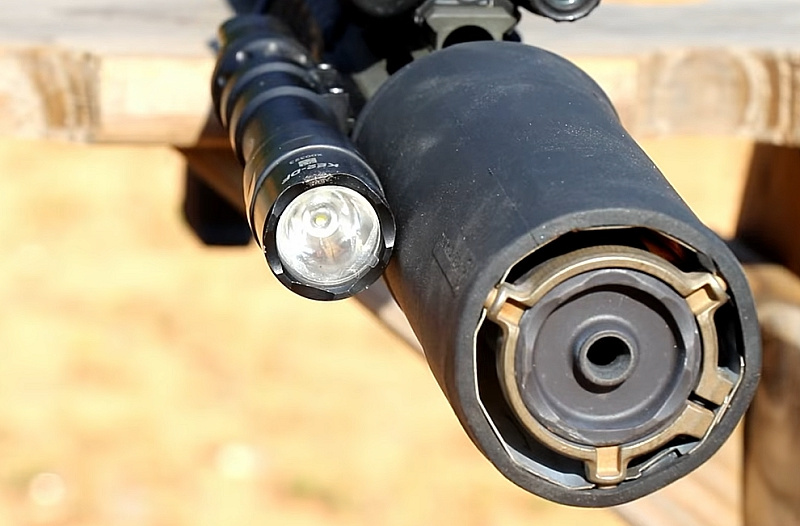
If it’s the latter, the contact between the two could cause a torque on the rail and affect the zero of other accessories like a laser or a bridged optic. If you elect to do that, you better check your zeroed accessories regularly. That can be mitigated or avoided by changing your mount to set the light a little wider off the handguard.
A Few Words of Caution
Before you buy a suppressor cover, there are a few more things to consider:
- Suppressor covers are not “one size fits all.” You need to know the dimensions of your suppressor.
- Larger suppressor covers may create a shadow from your weapon light.
- As with any accessory, suppressor covers have different specs for different purposes. Many will tell you the temperature rating for its heat shield, or shields, and how many rounds it can take in a given amount of time to reach that level. If you exceed that and damage your cover or your suppressor, that’s on you, not the cover. So, it’s a good idea to know how you intend to use it and choose accordingly.
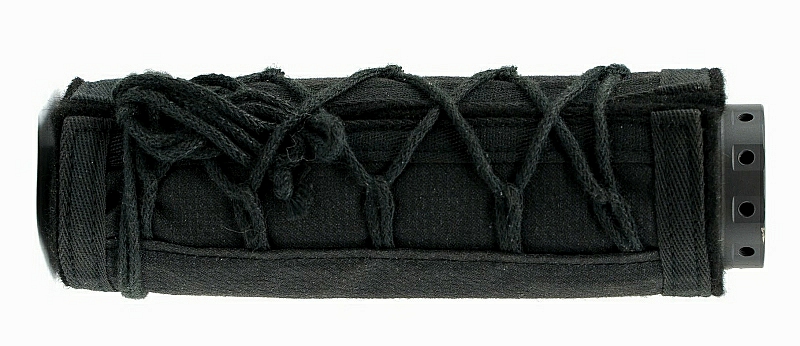
- Speaking of damage, covers block the heat from your hands and other places, but that heat has to go somewhere. Despite venting features, most of it goes right back onto the suppressor. If you don’t follow the directions, along with having a little sense about you, that extra heat will damage your suppressor, if only in terms of its long-term durability.
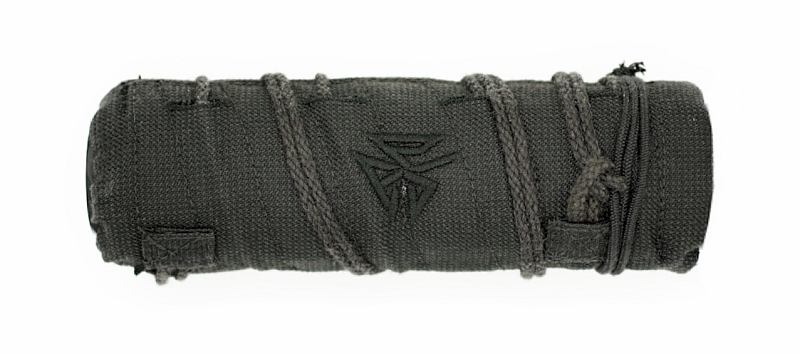
- Understand that suppressor covers are ultimately a consumable product. They will degrade over time. They may even deform. Stay on top of that degradation because you can injure yourself and damage your suppressor. These covers aren’t a one-and-done kind of thing like other sheaths we’ve alluded to, but understand that regular use means they will have to be replaced at some point.
Where Can I Get One?
Happily, you have lots of choices. So as not to show favoritism, since this isn’t a review article, I’ll list some of the more prominent brands I’ve run across alphabetically by category. This list is by no means exhaustive, so do your research.
Silicone Sleeves
- Manta Defense
- Weka Innovations
Fabric Wraps
- Armageddon Gear
- Burn Proof Gear
- Cole-Tac
- Rifles Only
- SilencerCo
- Ulfhednar
Polymer Covers
- Magpul
- Modtac
Now that I’ve done the honest thing and listed other suppressor covers for you, I’ll add a shameless plug in too. SilencerCo sells High Temp and Extreme Temp suppressor covers that are top quality. No need to go to any other site. We’ve got you covered.
There you go. We hope this was helpful. Going suppressed will revolutionize your shooting experience, but you need to have the proper equipment.
And, modern suppressor covers can even look good, with many color and camouflage pattern choices. There’s really no downside to having a quality suppressor cover, while the upside is considerable. Your suppressor, your firearm, and your hands will thank you.


